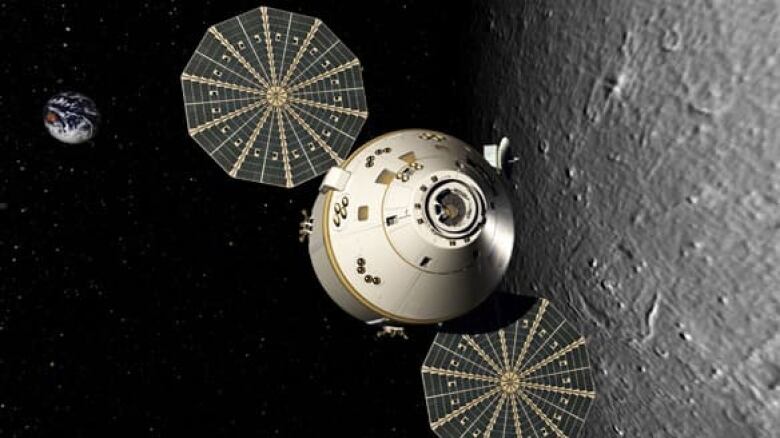Trump's proposed NASA cuts take aim at Earth science
The budget continues funding for space exploration programs

Officials at NASA were delighted that U.S. President Donald Trump's budget proposal allocates $19.1 billion for the agency, down only 0.8 per cent from last year,but the proposal also cuts several programs to study the Earth. It'sanother move that shows this administration is not interested in the environment.
The new budget places a lot of emphasis on human space flight, including the international space station and getting people to Mars in the 2030s. That means continuing the development of a new giant rocket, the SLS and Orion Crew capsule designed for deep space. (Of course, entrepreneur Elon Musk plans to get there sooner with his own, cheaper, heavy lift rocket and capsule, but that's another story.)
Those working in NASA's Earth sciences division, however, were disappointed to learn that $102 million will be cut from their budget, forcing the cancellation of four Earth-monitoring satellite programs: the Plankton, Aerosol, Cloud, ocean Ecosystem (PACE) satellite; the Orbiting Carbon Observatory-3 (OCO-3) experiment; the Climate Absolute Radiance and Refractivity Observatory (CLARREO) Pathfinder;and the Deep Space Climate Observatory (DSCOVR).

NASA has had a "Mission to Planet Earth" program since the late 1980s, and thanks to satellites such as the Earth Observing System and Landsat series, scientists have been able to trace the changes taking place in the oceans, atmosphere, vegetation and ice that are both natural cycles, as well as those due to human activity. In fact, most of the information we have about climate change has come from these satellites.
Now many of those eyes will be blinded.
Another $115 million will be slashed by eliminating NASA's Office of Education, which was designed to inspire young people to become involved in STEM, Science, Technology, Engineering, and Mathematics.
Environmental scientists are concerned that future changes to the planet will go undetected, making it difficult to make predictions and develop strategies for adaptation. In a statement, John Nemeth, Director of the Sigma XI Honour Society, one of the largest scientific organization in the United States, said Trumps budget proposal, "would do harm to the American scientific enterprise, abruptly and dangerously curtail progress in scientific research and choke off the productivity needed for economic growth and technological leadership."
Mars promises

Trump is the fourth president to promise a human mission to Mars. Both George H.W. Bush and George W. Bush, as well as Barack Obama pledged deep space missions to the red planet, but those missions have yet to appear, largely because of the tremendous costs involved, which will be well over between $80 - $100 billionUS.
The aerospace contractors building the new heavy lift rocket needed to get to Mars are the same contractors who built the space shuttle system and are using variations on the existing technology. In other words, Trump, like his predecessors, is keeping the business side of space exploration alive.
The proposed cuts to NASA's earth science programs go along with Trump's proposed 30 per centcut to the Environmental Protection Agency, and the appointment of Scott Pruitt as the leader of that department, a man who has expressed doubt about whether burning fossil fuels is the primary reason for climate change.

In the short term, focusing on the business of sending humans to space is good news for NASA and its contractors. But most of the science at NASA has come from satellites and robotic missions to the planets. And the missions looking at planet Earth have tracked the rapid changes brought on by human activity. By ignoring those changes and refusing to take action on climate change, the cost of doing business on a future, warmer planet could go even higher.












_(720p).jpg)


 OFFICIAL HD MUSIC VIDEO.jpg)
.jpg)



























































































